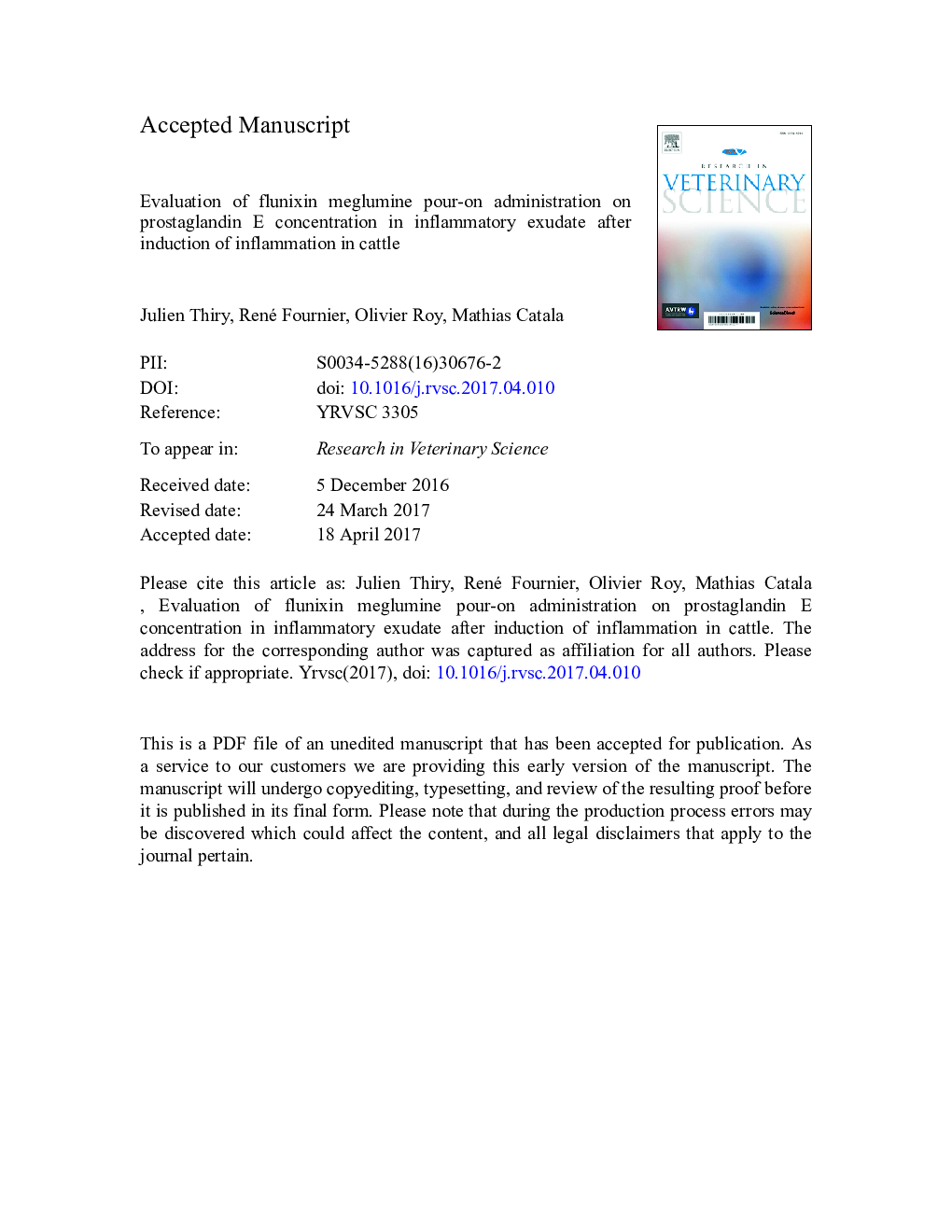| Article ID | Journal | Published Year | Pages | File Type |
|---|---|---|---|---|
| 5543920 | Research in Veterinary Science | 2017 | 15 Pages |
Abstract
The effect of flunixin transdermal pour-on solution (Finadyne® Transdermal; MSD Animal Health) on prostaglandin E2 (PGE2) synthesis in bovine inflammatory exudate was evaluated in a tissue cage model of acute inflammation. Twelve calves were randomly allocated to two-treatment groups over two sequences. Three weeks prior to the first period, sterile hollow perforated polyethylene balls were surgically embedded in the subcutis at four distinct sites in each animal. On the first day of each period, an aseptic inflammation was induced by injecting 0.5Â mL of a 2% carrageenan solution into the lumen of each tissue cage. Treatment with either flunixin transdermal or negative control (NaCl) immediately followed. 0.5Â mL of exudate was collected prior to challenge, and at 2, 4, 8, 12, 24, 36 and 48Â h after challenge. Exudate PGE2 concentrations were analyzed using ultra-high pressure liquid chromatography coupled with tandem mass spectrometry method. Mean PGE2 concentrations were consistently lower in calves treated with flunixin transdermal than those measured in calves treated with negative control, indicating an inhibitory activity on cyclooxygenase. Inhibition was the highest at 8Â h after treatment, and differences with the negative control were significant at +Â 8, 24, 36 and 48Â h. The flunixin transdermal formulation was effective in reducing PGE2 concentrations in bovine exudate following an induced inflammation. Its anti-inflammatory action started in the first hours after treatment and lasted up to 48Â h.
Related Topics
Life Sciences
Agricultural and Biological Sciences
Animal Science and Zoology
Authors
Julien Thiry, René Fournier, Olivier Roy, Mathias Catala,
